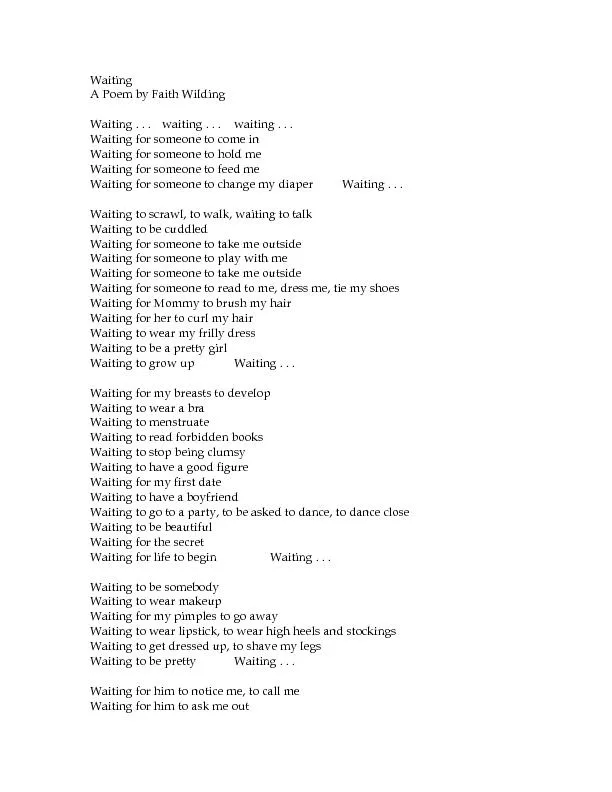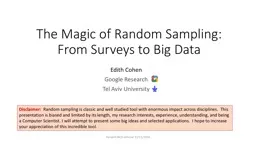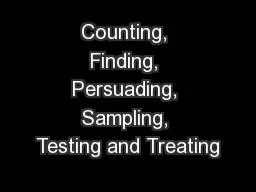PPT-WRS: Waiting Room Sampling for Accurate Triangle Counting in Real Graph Streams
Author : olivia-moreira | Published Date : 2018-03-17
Kijung Shin Triangles in a Graph Graphs are everywhere Social Network Web Emails etc Triangles are a fundamental primitive 3 nodes connected to each other Counting
Presentation Embed Code
Download Presentation
Download Presentation The PPT/PDF document "WRS: Waiting Room Sampling for Accurate ..." is the property of its rightful owner. Permission is granted to download and print the materials on this website for personal, non-commercial use only, and to display it on your personal computer provided you do not modify the materials and that you retain all copyright notices contained in the materials. By downloading content from our website, you accept the terms of this agreement.
WRS: Waiting Room Sampling for Accurate Triangle Counting in Real Graph Streams: Transcript
Download Rules Of Document
"WRS: Waiting Room Sampling for Accurate Triangle Counting in Real Graph Streams"The content belongs to its owner. You may download and print it for personal use, without modification, and keep all copyright notices. By downloading, you agree to these terms.
Related Documents














